Making beautiful photographs of moving water such as streams, rivers and surf/beaches can be a challenge. But stunning memories and exquisite art can result with good locations, good techniques and most important, patient persistence and experimentation.
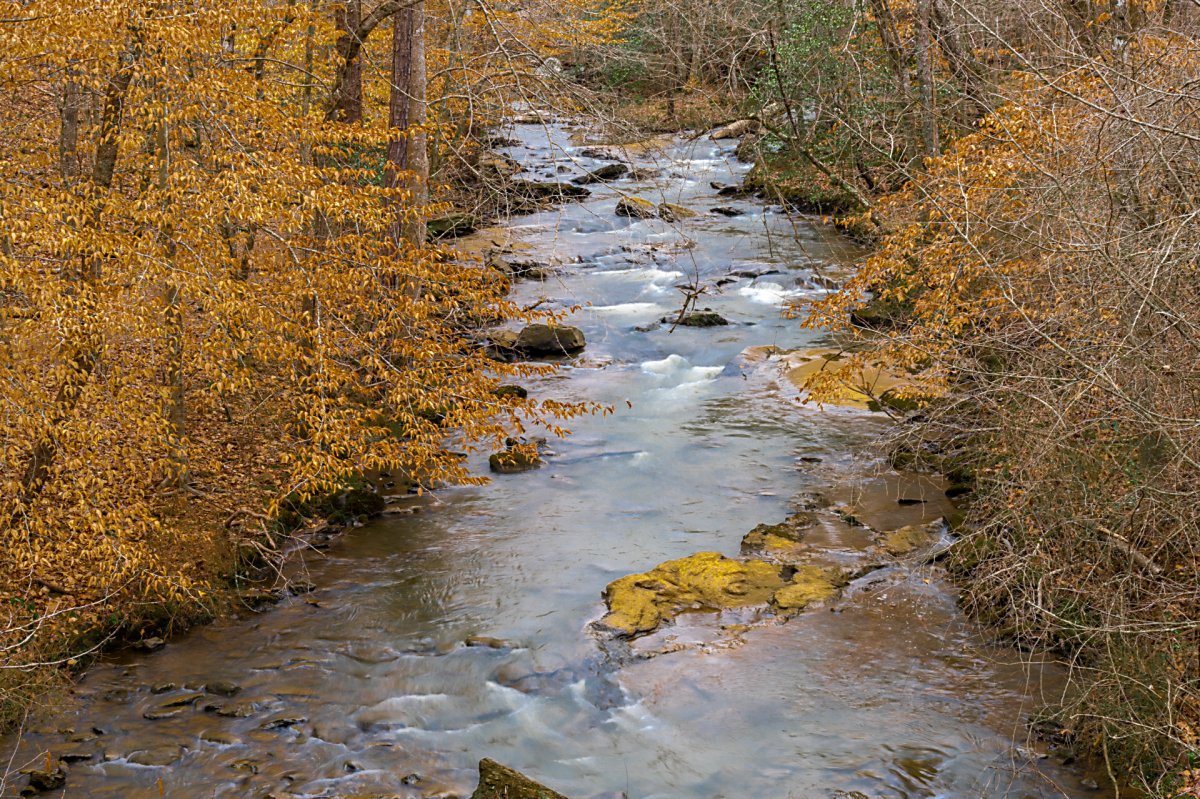
Bear Creek from the Bridge - Bill Hatherly
Our fun group of members and guests explored Little Bear Creek and Bear Creek, along with their waterfalls and mill ruins, at Cochran Mill Park on Saturday February 27. Workshop leaders were Jim Harrison and Janerio Morgan, both APS Master Photographers.

(Most of the) Moving Water Workshop Group After a Long Day of Hiking and Shooting - Jim Harrison
Thanks to everyone for keeping everything safe, physically on steep slopes and sometimes slick rocks, and health-wise by keeping good social distance and masking.
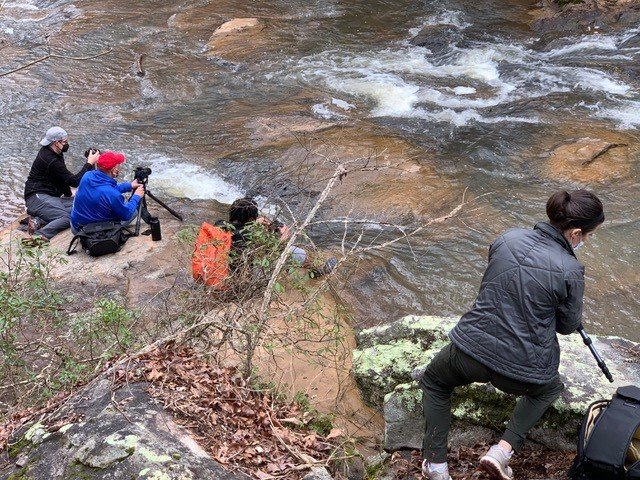
The steep climb down to Bear Creek was worth it - Janerio Morgan
Tips and Tricks
We discussed a variety of approaches, tips and tricks for making moving water images successful, and then hit the trail, creeks and waterfalls to "learn by doing"
What shutter speeds and apertures work best? For a super smooth, silky look: 1/2 - 1 sec. or more. To emphasize motion & detail: 1/5 - 1/2 sec. or less; experiment, and try different things. Choose your aperture to get the depth of field (DOF) you need or want. And always use your histogram and "blinkies" to make sure your exposure isn't too bright or too dark, especially to retain desired detail in the brightest parts of "white water."
Here are two perspectives of the "same" scene, one by Janerio Morgan and the other by Jim Harrison.
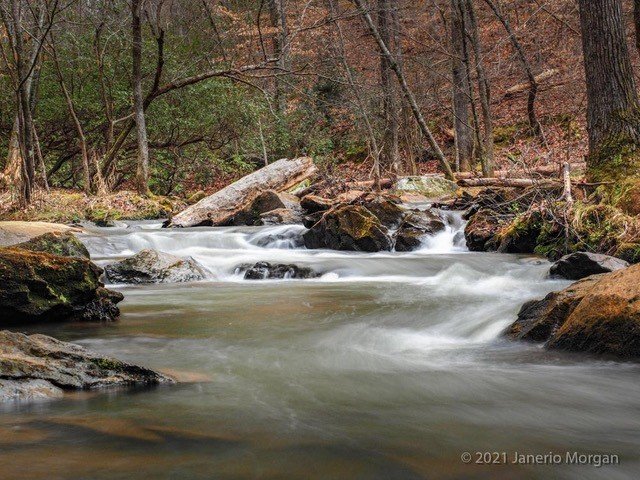
Bear Creek - Janerio Morgan
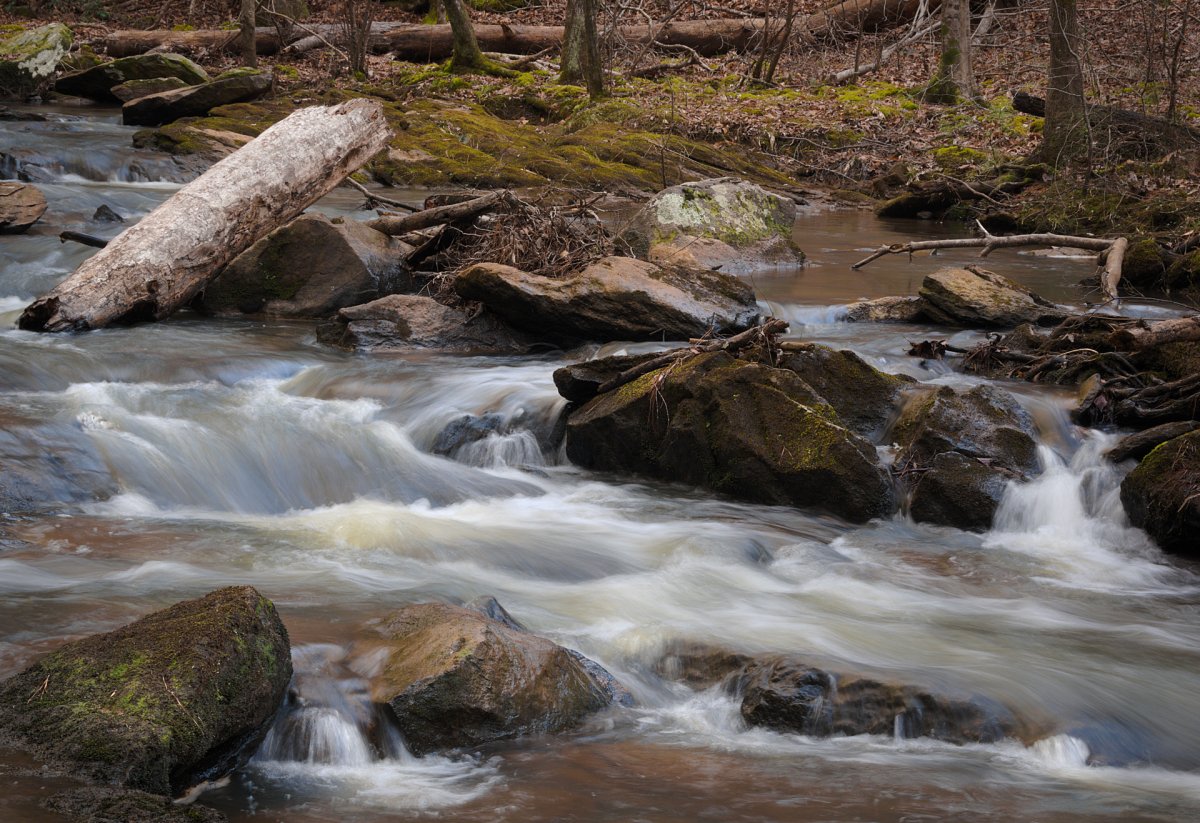
Big Log in Bear Creek - Jim Harrison
What filters (like neutral density and variable neutral density) can help, and how to use them? Neutral density (ND) filters can be a big help to get the shutter speed(s) you want for the moving water effect/feeling/experience you want to get across to the viewer. Variable ND filters are very versatile, and have a wide range, but can be expensive. For streams and waterfalls you might need only 2-5 stop filters. For very long exposures, for beaches, shorelines and similar subjects, ND filters with 8, 10 or more stops might be needed.
For a good video summary of the above check out Gary Gough's How to Photograph Waterfalls. He is a professional photographer from "across the pond."
What lighting and weather conditions work best and what to try with less than perfect lighting? Even lighting on overcast, cloudy days can make things easy. Contrasty or harsh lighting can make it difficult to get a perfect exposure, so consider monochrome for those conditions.
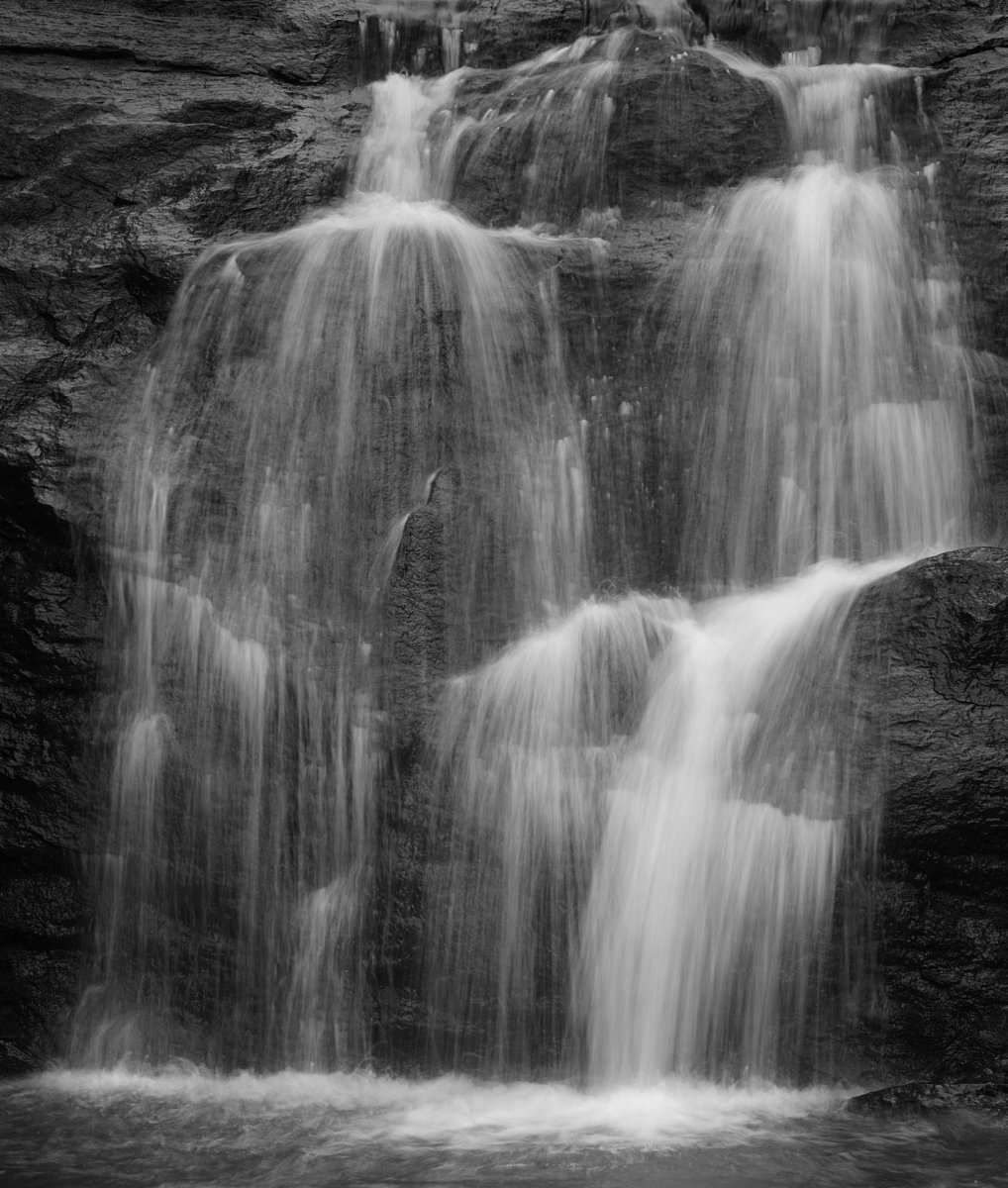
Little Bear Creek Falls: Detail #2 - Jim Harrison
What compositions are worth trying? A full discussion of composition is way beyond our moving water subject (see our series of composition articles - this article has links to all the composition articles).
Here is some basic composition advice. Be creative; the composition that no one has seen before will be sure to capture interest. Compose "in camera," don't rely on cropping during post processing. Eliminate everything that isn't essential - simplify! Always consider the context of your main subjects – the stream is more than water! A stream is the product of it's whole watershed, so broaden your point of view to include cultural perspectives, and your own experience and knowledge.
General nature advice! Being in nature is really about the experience, so try to be fully "in the moment." Be open to all that nature gives you. Be open to all "scales," small, medium & large.
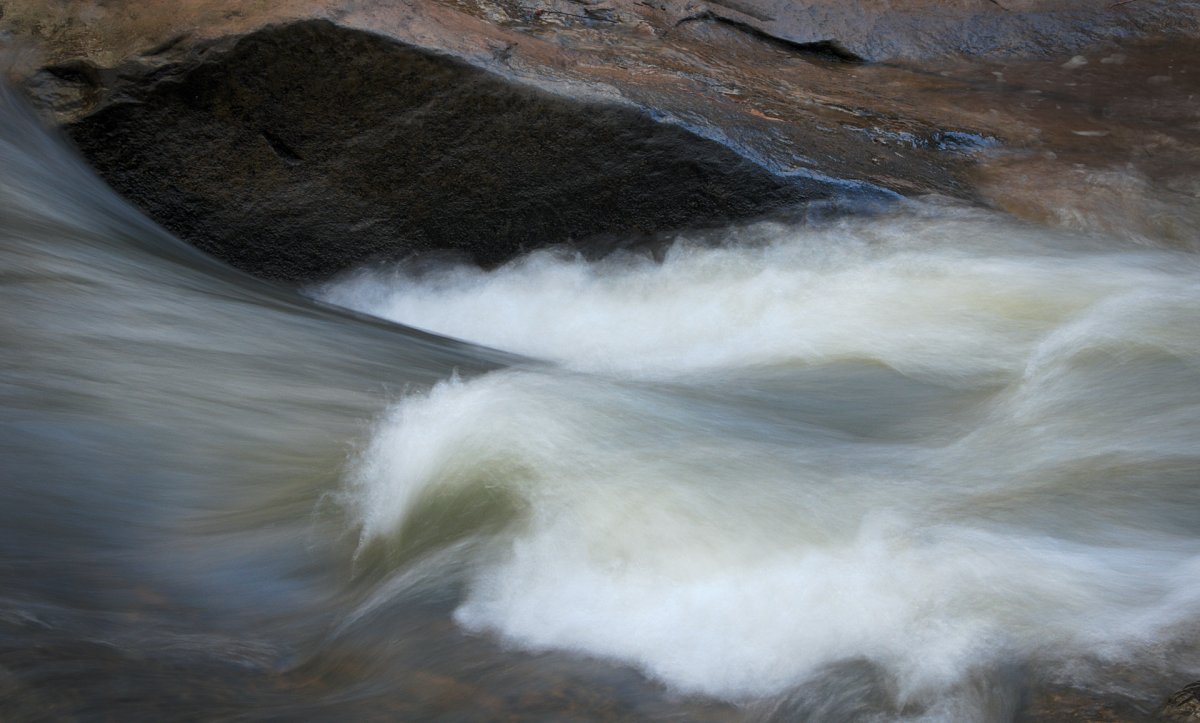 Bear Creek Wave - Jim Harrison
Bear Creek Wave - Jim Harrison
Pay attention to your subconscious/your "mind's eye." Your mind will start noticing fascinating things that you aren't even aware that you're seeing. And always, shoot what you love/your personal symbols/your "familiars." These are the things that speak to you (visually or otherwise), and enable capturing interesting images that are truly yours.

Busy Photographers Below Little Bear Creek Falls - Jim Harrison
Questions or comments? Contact: Jim Harrison (right click to see email)
Don't miss our next Workshop. Check out what's coming up on our Workshops page.

